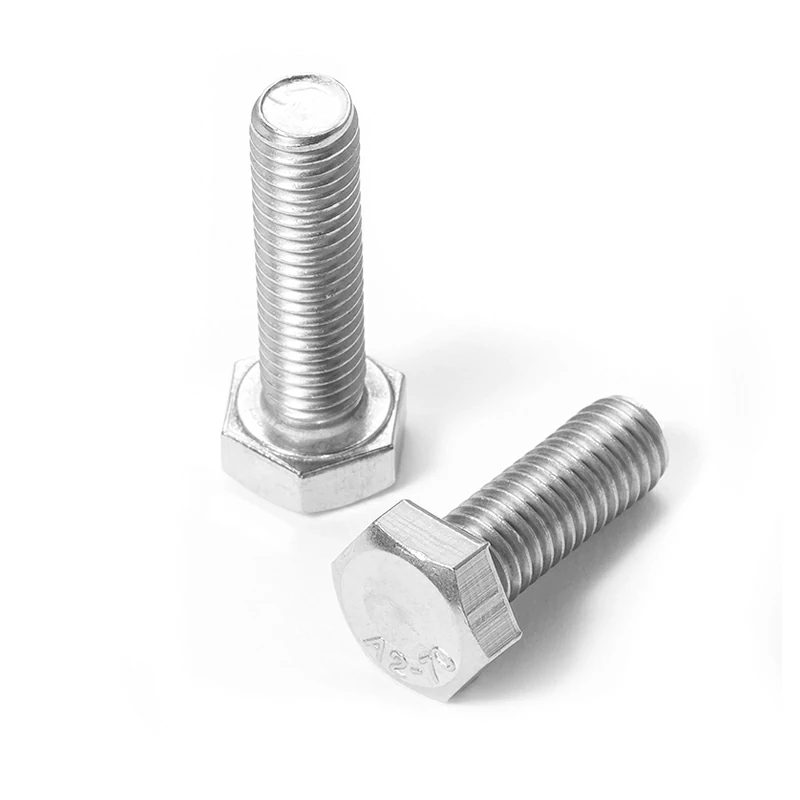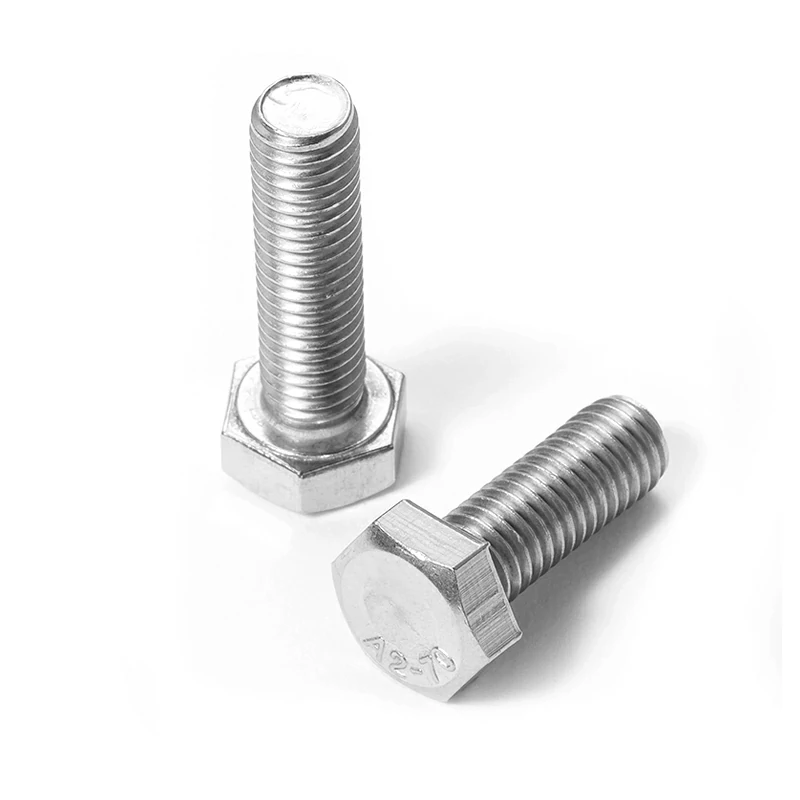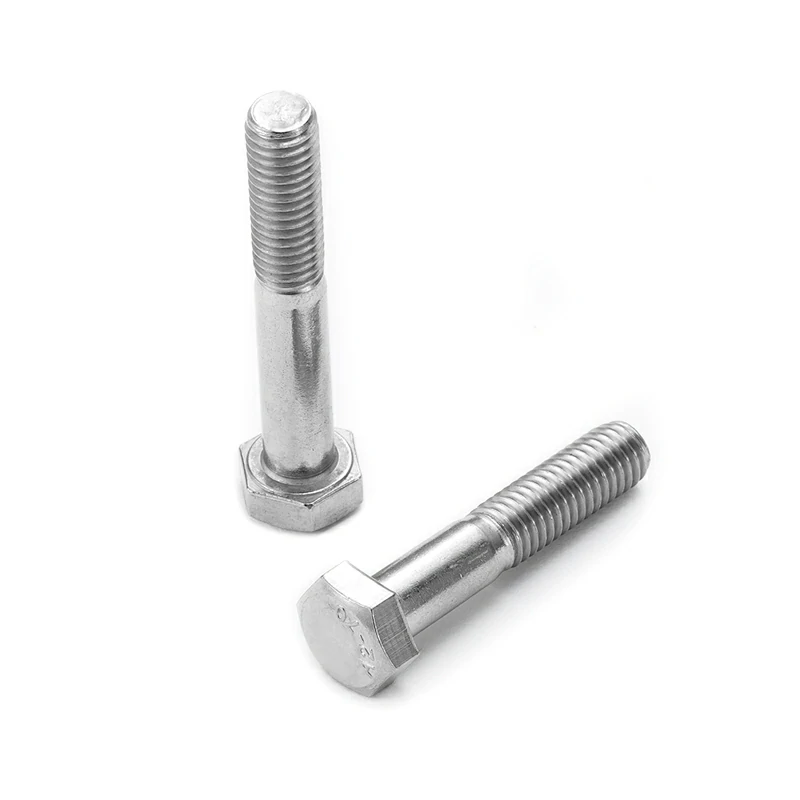Fasteners are essential hardware devices that mechanically join two or more objects together, either permanently or non-permanently. These versatile components are critical in a wide range of industries, including automotive, aerospace, construction, and consumer goods. Fasteners ensure the structural stability and operational safety of products, from machinery to infrastructure. In this guide, we’ll cover the most common types of fasteners, materials used, and key considerations when selecting the right fastener for your application.
1. Types of Fasteners
Fasteners can be broadly categorized into mechanical and non-mechanical types. Below is a detailed breakdown of the most common types of fasteners:
A. Bolts and Screws
Bolts: Threaded fasteners used with nuts to join components. They are ideal for heavy-duty applications in construction, automotive, and machinery.
Common Types: Hex bolts, carriage bolts, eye bolts, anchor bolts.
Screws: Threaded fasteners that directly engage with the material without the need for nuts. They are versatile for both industrial and residential applications.
Common Types: Wood screws, machine screws, self-tapping screws, sheet metal screws.
B. Nuts and Washers
Nuts: Fasteners with internal threads that pair with bolts to secure components.
Common Types: Hex nuts, lock nuts, wing nuts, coupling nuts.
Washers: Thin disks used to distribute the load of a fastener, preventing material damage and improving the fastener’s performance.
Common Types: Flat washers, lock washers, spring washers.
C. Rivets
Rivets: Permanent fasteners used to join materials by deforming one end of the rivet once inserted.
Common Types: Blind rivets, solid rivets, tubular rivets, and drive rivets.
D. Anchors
Anchors: Secure objects into materials like drywall, masonry, or concrete that are too weak to hold fasteners directly.
Common Types: Expansion anchors, toggle bolts, wall plugs, concrete anchors.
E. Pins and Clips
Pins: Small fasteners used to align and hold parts together.
Common Types: Cotter pins, clevis pins, dowel pins, roll pins.
Clips: Secure parts by snapping into place, often used in assembly.
Common Types: Circlips, spring clips, retaining clips.
F. Cable Ties and Zip Ties
Cable Ties: Used to bundle cables or wires together. They are made of durable nylon and come in various sizes and strengths.
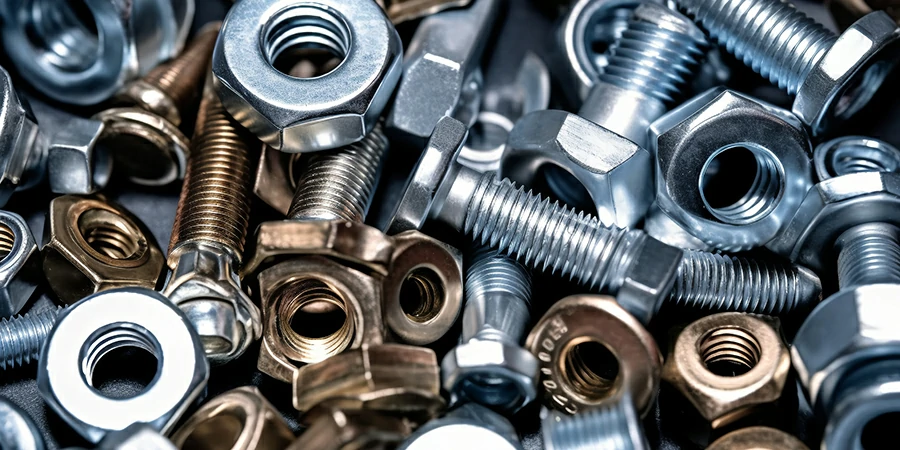
2. Materials Used in Fasteners
The material choice for a fastener is paramount to its performance, durability, and suitability for specific environments. The right material must be selected based on requirements such as exposure to moisture, heat, or chemicals.
Common Materials for Fasteners:
Steel: A widely used and affordable material for fasteners, offering versatility. However, plain steel can corrode without appropriate protective coatings.
Stainless Steel: A prime example of high-performance materials, stainless steel offers excellent corrosion resistance, durability, and strength. Common grades like AISI 304 and 316 are versatile, while specialized grades like Duplex 2205 stainless steel fasteners provide enhanced properties for extreme conditions.
Other Materials: Fasteners are also manufactured from various other metals and alloys, each possessing specific attributes for different environments. Examples include carbon steel for high strength, brass for conductivity and corrosion resistance in specific conditions, and aluminum for lightweight applications. The correct material selection is critical for ensuring the fastener’slongevity and reliable performance in its intended use.
Coatings and Platings:
To enhance a fastener’s properties, various coatings and platings can be applied:
Zinc-Plated: Commonly used for steel fasteners, offering moderate corrosion resistance.
Hot-Dip Galvanized: Offers excellent resistance, especially for outdoor applications.
Nickel Plated: Used for both aesthetics and some corrosion resistance.
Black Oxide: Provides mild corrosion resistance and an attractive black finish.
Chrome Plated: Often chosen for aesthetic purposes, offering a shiny and durable surface for fasteners.
3. Fastener Sizes and Threads
Fastener sizes and threads are fundamental aspects that define their dimensions and the helical ridges enabling them to be screwed into place. Understanding these specifications is essential for ensuring compatibility with other components in any assembly.
Key Measurements:
Diameter: The measurement across the fastener’s head or body is crucial for fitting into pre-drilled holes or mating with other components.
Length: The measurement from the underside of the head to the tip of the fastener, dictating the grip range.
Thread Pitch/Threads Per Inch (TPI): For threaded fasteners, this refers to the distance between adjacent threads (metric) or the number of threads per inch (imperial). This impacts the strength and ease of assembly.
Thread Types:
Different thread forms (e.g., coarse, fine) exist for various applications, influencing grip, shear strength, and resistance to loosening.
Unified Thread Standard (UTS): Common in the US, including UNC (Coarse) and UNF (Fine).
Metric Thread: Used globally, measured in millimeters (e.g., M6, M8).
Acme and Trapezoidal Threads: Used in linear motion applications.
Key Thread Terminology:
External Thread (Male Thread): Found on the outside of screws and bolts.
Internal Thread (Female Thread): Found in nuts or caps.
Single Thread: A single thread wrapped around the fastener.
Double Thread: Two threads for faster engagement.
4. Fastener Selection: Factors to Consider
When selecting fasteners for your project, there are several key factors to ensure optimal performance:
A. Application Environment
Corrosion Resistance: Fasteners exposed to moisture, chemicals, or high temperatures should be made from corrosion-resistant materials like stainless steel or titanium.
Weight and Strength: Choose steel for heavy-duty strength or aluminum for lightweight applications.
B. Load and Stress
Shear Strength: The ability to resist forces trying to pull the fastener apart in a parallel direction.
Tensile Strength: The ability to resist forces pulling the fastener along its axis.
Clamping Force: The amount of pressure needed to keep the parts together without damaging them.
C. Compatibility with Material
Thread Type: Ensure the fastener’s thread matches the material’s threading (e.g., wood, metal, or plastic).
Hole Size: The hole where the fastener will be inserted must match the size of the fastener for a secure fit.
D. Vibration Resistance
In applications with frequent vibrations, use lock washers, lock nuts, or thread-locking compounds to prevent loosening.
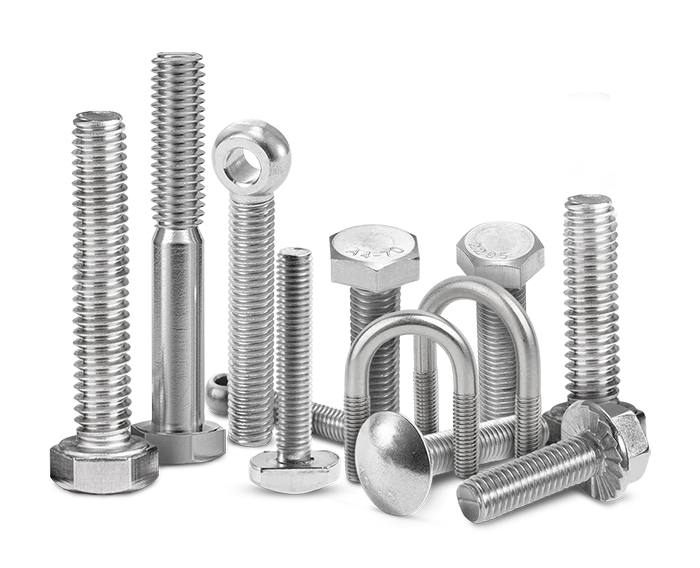
5. Common Fastener Applications
Fasteners are used in a variety of industries, each with its specific needs:
Industrial Applications: Used extensively in machinery, energy sectors, and chemical plants, fasteners ensure durability and performance in demanding environments.
Construction Applications: Fasteners like bolts, screws, and anchors are essential in building structures such as bridges, buildings, and foundations.
Marine & Coastal Environments: Fasteners made from stainless steel or titanium are ideal for shipbuilding, offshore platforms, and dock construction, where corrosion resistance is critical.
Automotive Industry: Fasteners are used throughout vehicles, from engine components to safety systems.
Aerospace Industry: Fasteners must meet strict requirements for high strength-to-weight ratios, reliability, and performance under extreme conditions.
Electronics Industry: Precision fasteners are used for securing components in circuit boards and electronic casings.
Medical & Food Processing: Specialized fasteners are needed in these sectors, made from hygienic materials like stainless steel to avoid contamination.
Consumer Goods: Fasteners play a role in everything from furniture assembly to electronics and appliances.
Conclusion
Fasteners are indispensable components in a wide range of applications, ensuring structural integrity, safety, and performance. By understanding the types of fasteners, materials, and factors to consider when selecting them, you can ensure the longevity and reliability of your assembly. Whether you’re working in construction, automotive, aerospace, or any other industry, selecting the right fasteners for your project is crucial to its success.

